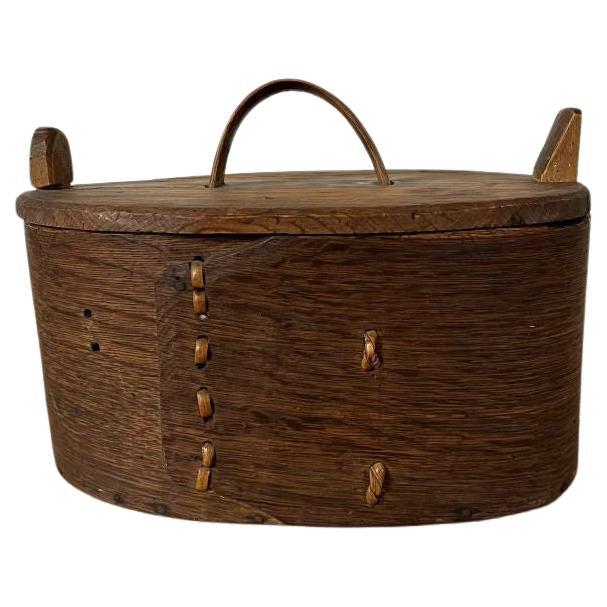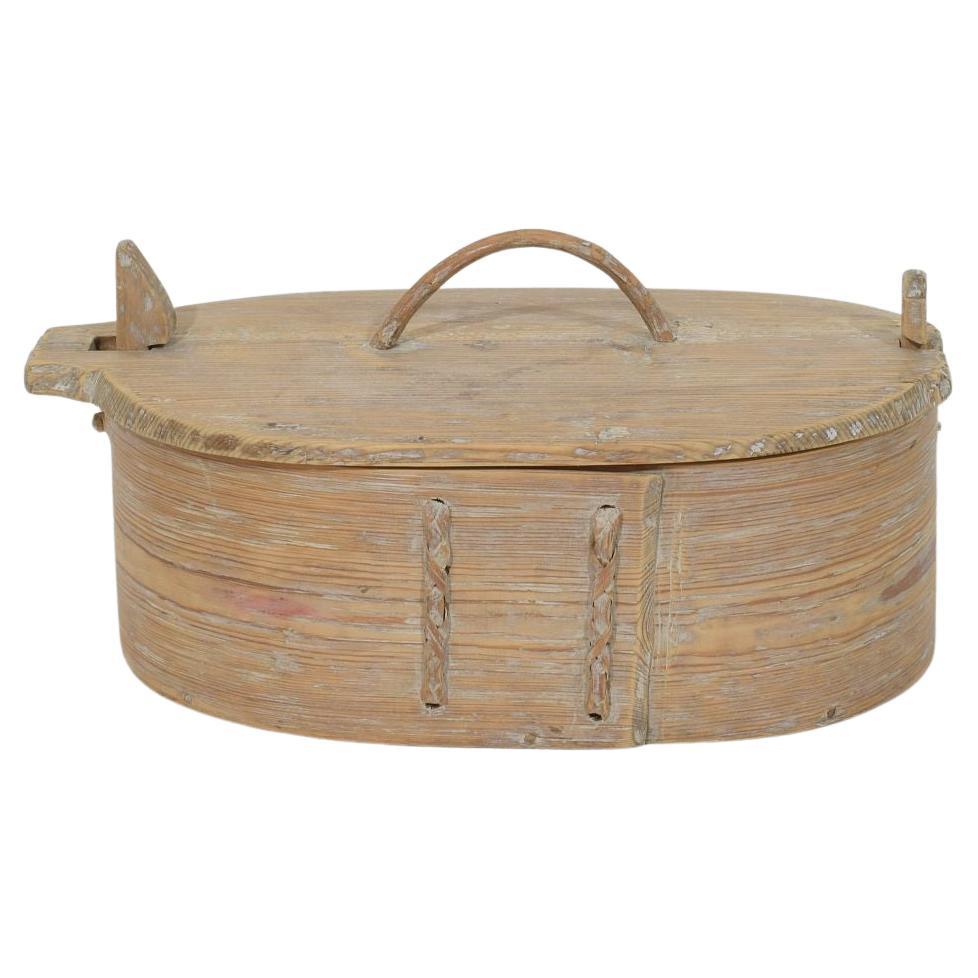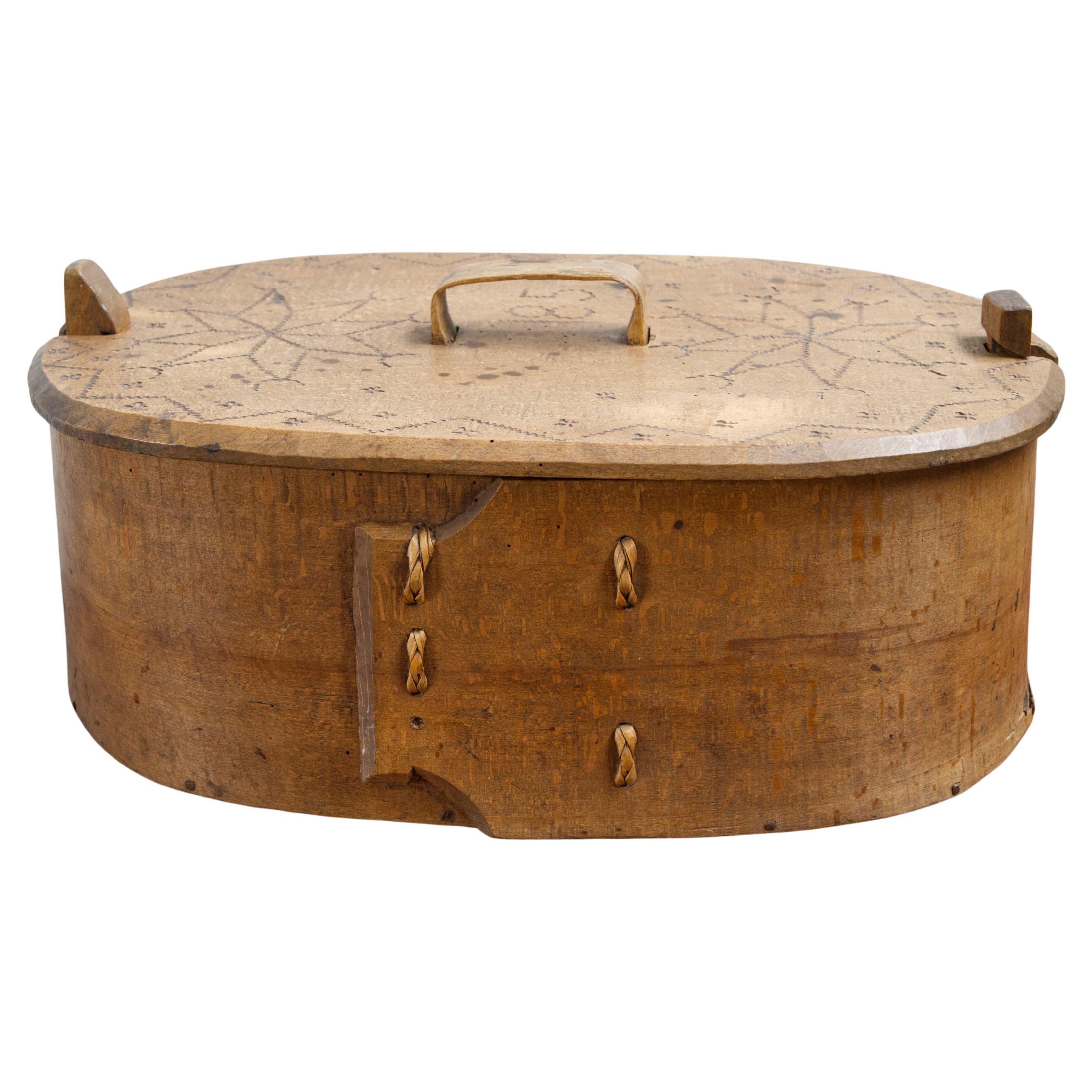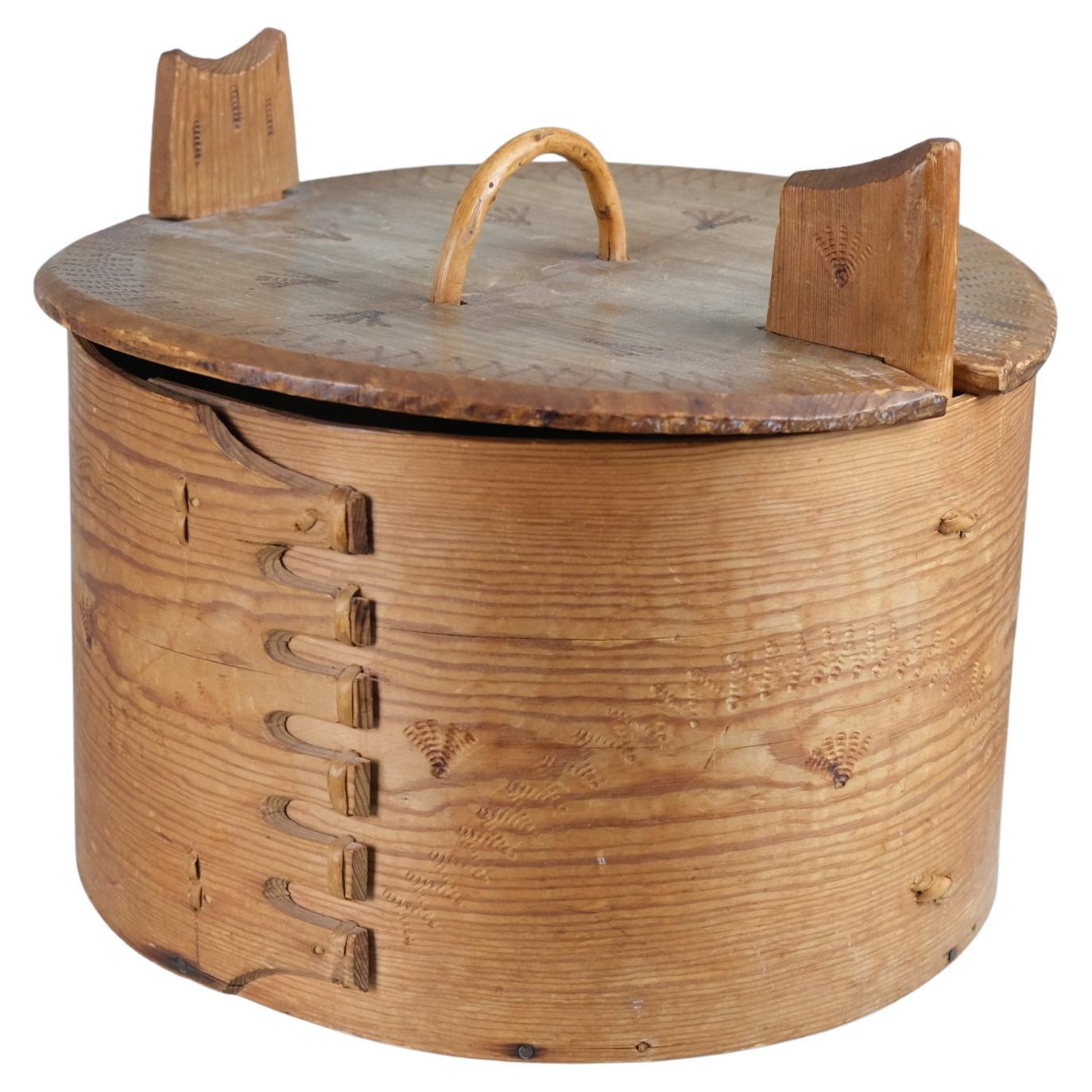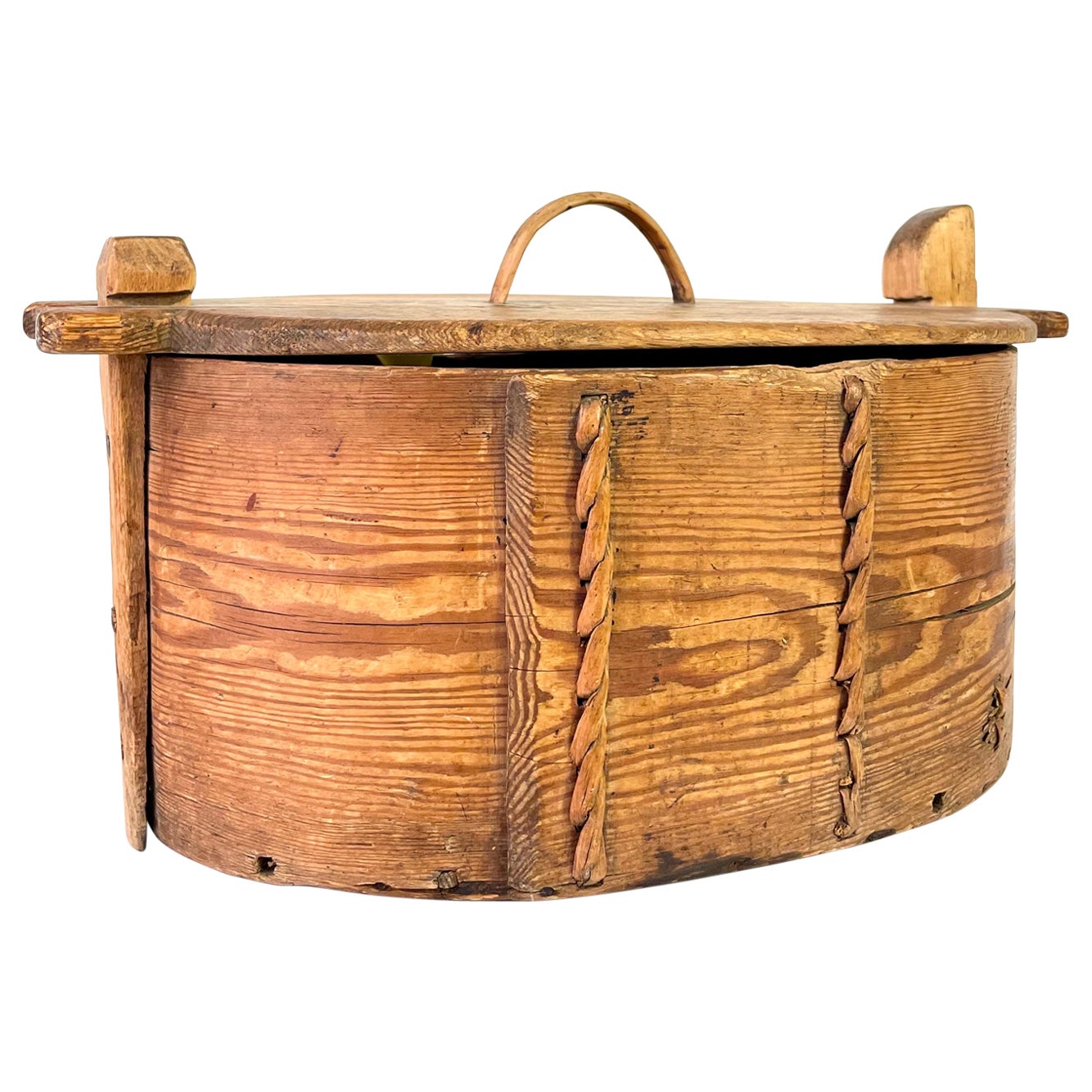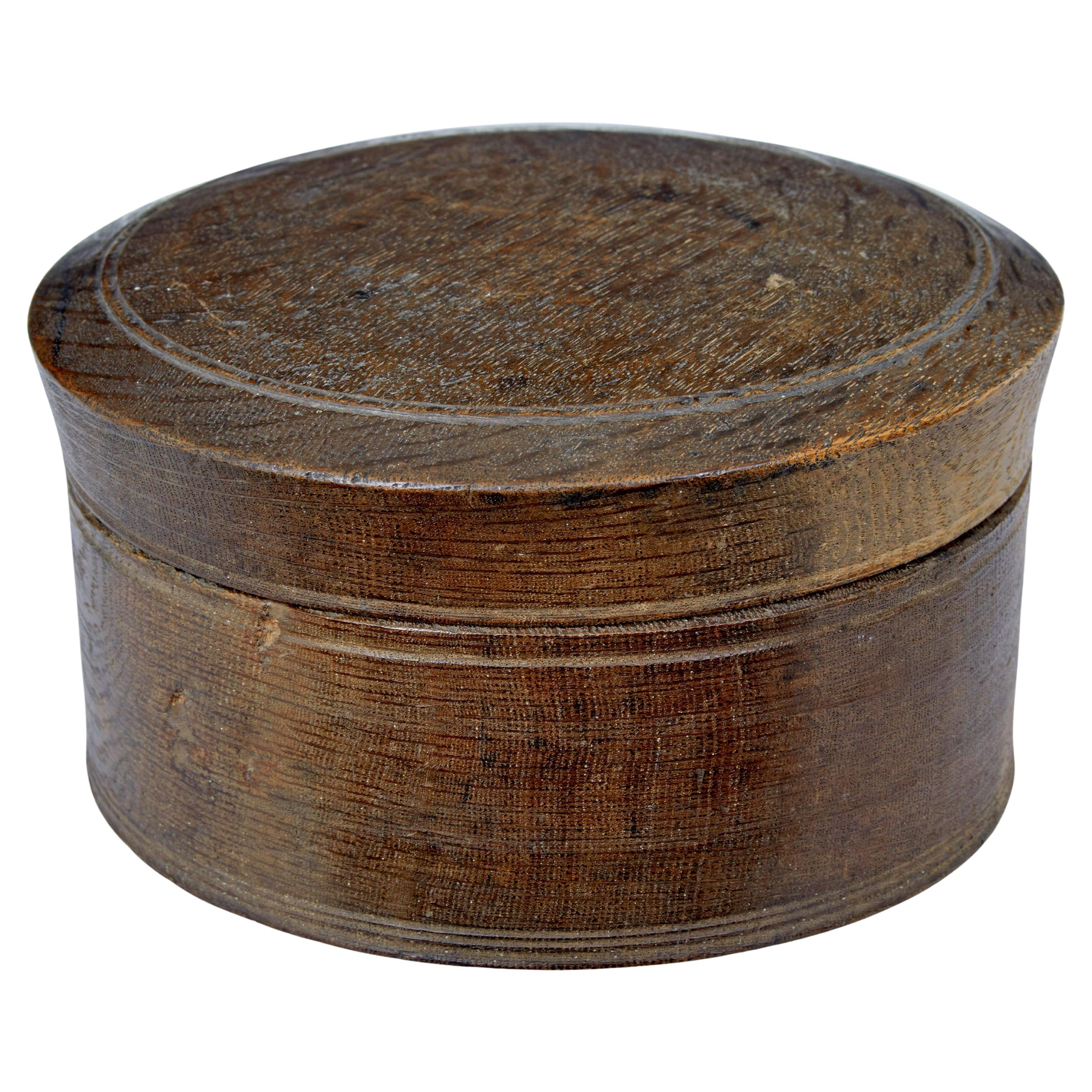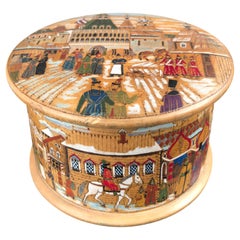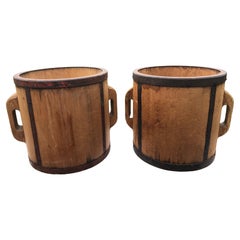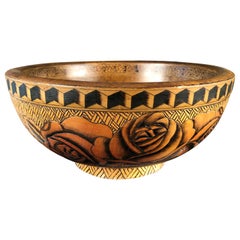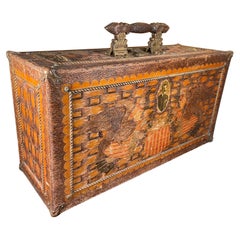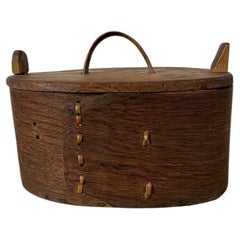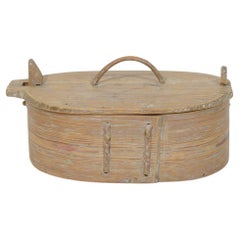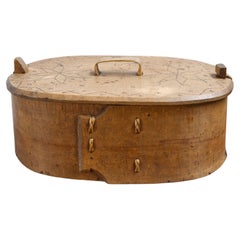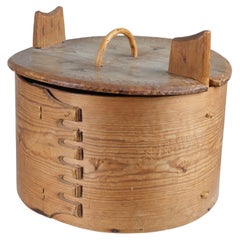Items Similar to Norway Large Tine Bentwood Box, 1890
Video Loading
Want more images or videos?
Request additional images or videos from the seller
1 of 15
Norway Large Tine Bentwood Box, 1890
$3,500
£2,648.96
€3,040.24
CA$4,986.04
A$5,407.48
CHF 2,840.21
MX$65,683
NOK 35,540.78
SEK 33,463.63
DKK 22,707.15
About the Item
From Norway and an old New England collection.
Unique find.
A fine Norwegian Hand crafted and incised wooden tine bentwood box, 1890
An all original work of art signed on side with date 1890
The craftsmanship and details are superb.
Dimensions: 9.5 inches high and 13.5 inches wide and 8 inches deep
Hand crafted and hand burned using pyrographic techniques
Provenance: New England collection.
History of Norway's Tine Bentwood Box:
Bent wood boxes have a long and colorful history. Many different cultures have made their own unique versions of them. In Norway, examples of these boxes have been unearthed in the remains of Viking ships dating from 840 A.D. They were used to store valuable possessions, grains, meat, or anything else that might need to be secure. The traditional Norwegian tine, pronounced "teen-ah", or the Swedish svepask is constructed of a thin piece of steam-bent wood that is laced together with some type of tree root, usually birch. The sides have two vertical posts cut with notches that are used to hold the lid on. Because of the snapping noise that they make when being closed, they are also called snap boxes. To open the tine, the side posts are gently pulled apart using the flex of the wood until the lid is freed and can then be lifted off.
Decorations on tines have varied widely over the years. Some are left unadorned, but many are decorated at the whim of the craftsperson with carvings, hot poker work, or possibly painted. Antique versions are frequently decorated with traditional forms of Rosemaling, or Rose Painting. Rosemaling is a very colorful graphic form of painting that specializes in floral or organic motifs. The style of Rosemaling will vary significantly from region to region within Norway. Some styles are described as Os, Hallingdal, Viksdal, or Telemark. Each is characterized by specific color themes and unique approaches to design. Early boxes decorated with rosemaling are highly prized and often identifiable by artist. Among others Thomas Luraas is one of the better known early rosemalers. Many sophisticated collectors will specialize in work done by a single artist. The tine shown at right is an example of a Viksdal tine also known as the Sogn style which comes from a region in in Norway known as Sogn og Fjordane. These boxes are usually found painted with a salmon colored background and swirls of highly stylized floral designs or "S" curves done in blues, black, white and yellow. Many Viksdal boxes are constructed in a somewhat non-traditional form in that they lack the end corner posts, tend to be round and much like boxes referred to as "pantry boxes" in the US.
History of the Pyrography:
py·rog·ra·phy, a noun, is the art or technique of decorating wood or leather by burning a design on the surface with a heated metallic point. Pyrography was particular popular in America and Europe during the last quarter of the 19th century and first quarter of the 20th century.
We will be offering more important high quality Folk Art and pyrography works of art in the near future.
We have been collecting and dealing in authentic American Folk Art and pyrography works of art for more than thirty years.
Our president has authored informative articles on collecting pyrography and has amassed what is believed to be internationally the largest and finest collection of pyrographic folk art which is now being de-accessioned.
All works of art are guaranteed authentic and as described.
- Dimensions:Height: 9.5 in (24.13 cm)Width: 13.5 in (34.29 cm)Depth: 8 in (20.32 cm)
- Style:Arts and Crafts (Of the Period)
- Materials and Techniques:
- Place of Origin:Norway
- Period:
- Date of Manufacture:1890
- Condition:Wear consistent with age and use.
- Seller Location:South Burlington, VT
- Reference Number:1stDibs: LU1289224391152
About the Seller
5.0
Platinum Seller
Premium sellers with a 4.7+ rating and 24-hour response times
Established in 1990
1stDibs seller since 2015
2,402 sales on 1stDibs
Typical response time: 1 hour
- ShippingRetrieving quote...Shipping from: South Burlington, VT
- Return Policy
Authenticity Guarantee
In the unlikely event there’s an issue with an item’s authenticity, contact us within 1 year for a full refund. DetailsMoney-Back Guarantee
If your item is not as described, is damaged in transit, or does not arrive, contact us within 7 days for a full refund. Details24-Hour Cancellation
You have a 24-hour grace period in which to reconsider your purchase, with no questions asked.Vetted Professional Sellers
Our world-class sellers must adhere to strict standards for service and quality, maintaining the integrity of our listings.Price-Match Guarantee
If you find that a seller listed the same item for a lower price elsewhere, we’ll match it.Trusted Global Delivery
Our best-in-class carrier network provides specialized shipping options worldwide, including custom delivery.More From This Seller
View AllRussian Antique Kustar Painted Tobacco Box, 1930
Located in South Burlington, VT
From a New England collection and a unique find
Russian antique Kustar painted and incised tobacco box 1930
An all original work of art signed on ...
Category
Mid-20th Century Russian Arts and Crafts Tobacco Accessories
Materials
Wood, Pine
Japanese Antique Pair of Wood Rice Measure Vessels
Located in South Burlington, VT
Special find from our last Japanese Acquisition
Here's a beautiful and unique way to accent your indoor or outdoor garden space with these treasures from Japan!
This special ...
Category
Early 20th Century Japanese Meiji Sculptures and Carvings
Materials
Metal
$316 Sale Price / set
36% Off
Scotland Big Hand Painted "Butterfly" Bowl 1930
Located in South Burlington, VT
From Scotland and an old New England collection.
Unique find.
Scottish Hand crafted, hand painted, and incised wooden bowl, 1930
An all original work of art signed on botto...
Category
Mid-20th Century Russian Arts and Crafts Decorative Bowls
Materials
Wood, Pine
American Antique Folk Art Flying Eagles Heraldic Trunk, 1900
Located in South Burlington, VT
From an old New England collection.
An elaborate antique american folk art pyrography wood trunk. This highly detailed suitcase is hand craft...
Category
Early 20th Century American Edwardian Sculptures and Carvings
Materials
Brass
$2,280 Sale Price
20% Off
Japanese Rare Antique Inlaid Smoking Tansu, Complete 1850
Located in South Burlington, VT
The first we have seen
A spectacular and hard to find Inlaid mother of pearly - using the raden technique- and lacquered three-drawer Tansu complete with all original bronze accoutrement including a fine engraved antique long pipe and two removable covered bronze cylinders all executed by expert mid-19th century Edo samurai...
Category
Antique 19th Century Japanese Edo Scholar's Objects
Materials
Bronze
$960 Sale Price / set
48% Off
France Antique Paul Fouillen Arts Crafts Pyrography Platter Signed
Located in South Burlington, VT
From an old New England collection of fine Arts & Crafts furnishings.
A handsome original deeply carved , pyrography, and stained round platter work of art, circa 1920
Signed rever...
Category
Early 20th Century French Arts and Crafts Decorative Art
Materials
Wood, Pine
You May Also Like
Swedish Folk Art 19th-Century Bentwood Box - Svepask
Located in Kvidinge, SE
An old original Bentwood Box from the late 19th century
A beautiful piece full of history in oval shape with amazing patina and style with traces of age and use
"Svepask" was used ...
Category
Antique Late 19th Century Swedish Folk Art Decorative Boxes
Materials
Wood, Bentwood, Pine
$377 Sale Price
30% Off
18th Century Swedish Folk Art Bentwood Box
Located in Buisson, FR
Beautiful Swedish bentwood box that once was used for storage. Real rare piece
Sweden, circa 1750. Weathered and small losses.
Category
Antique 18th Century Swedish Rustic Trunks and Luggage
Materials
Wood
$688 Sale Price
50% Off
Antique Swedish Large Wooden 'svepask' storage box, 1851, Handmade Folk Craft
Located in Balen, BE
Antique Swedish Large Wooden 'Svepask' Storage Box – Dated 1851, Handmade Folk Craft
A rare and authentic example of 19th-century Swedish folk art, this large 'Svepask' storage box ...
Category
Antique 1850s Swedish Folk Art Decorative Boxes
Materials
Bentwood
19th Century Scandinavian Folk Art Bentwood Tine Box "Svepask", Pine & Rattan
Located in Helsinki, FI
A fine Scandinavian, most probably Swedish, folk art svepask (bentwood box) with lid, late 19th to early 20th century. Crafted in pine with beautiful details, this traditional box is...
Category
Antique Late 19th Century Swedish Folk Art Antiquities
Materials
Rattan, Pine
Swedish Folk Art 19th-Century Bentwood Box in Pine
Located in Örebro, SE
This is the Swedish wooden box, so-called svepask, from the second half of the 19th century.
It comes made of pine. This type of vessel was used when the daily provisions were carrie...
Category
Antique Late 19th Century Swedish Folk Art More Folk Art
Materials
Bentwood, Pine
Early 19th century Swedish carved oak lidded box
Located in Debenham, Suffolk
Early 19th century Swedish carved oak lidded box circa 1800.
Interesting find from one of our buying trips, naive carved/turned box made from solid oak. Still functional as an every...
Category
Antique Early 19th Century Swedish Rustic Decorative Boxes
Materials
Oak
